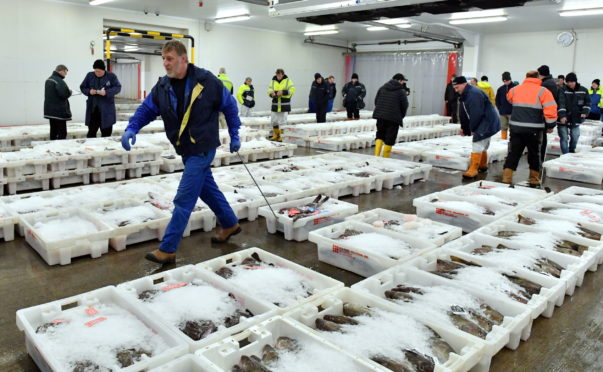Having spent the majority of my working career in journalism, then in government, I may not appear to be best placed to comment on the fishing industry.
However, my family has a long connection with fishing. Before I was born, a great-uncle was drowned off the coast of Caithness.
Much more recently, my first cousin, just a year older than me, was lost when the fishing boat of which he was skipper sank in the Firth of Clyde. And as a youngster, I went out with my uncle on the ring-netter on which he was engineer.
I even wrote a song about fishing as a tribute to him, which has been recorded by several well-known folk musicians.
So I’ve always maintained a close interest in the trials and tribulations fishing has faced over the past decades. And seldom has the industry been in greater peril than today, thanks to the coronavirus.
According to Seafood Scotland, demand for fish has dropped by 60% since the start of the pandemic. Around 80% of Scottish fish and shellfish worth some £1.6 billion normally goes to export, and this sector has virtually gone altogether.
Hotels and restaurants have closed the world over. And the remaining 20% of sales – the domestic market – is also suffering because many of the big supermarkets have closed their wet fish counters to implement social distancing.
Of the big supermarket chains only Morrisons kept their wet fish section open and last week Seafood Scotland wrote to all the others in an appeal for them to do the same.
Despite the fact that so much of our own seafood is exported, around 60% of what Scottish consumers buy is imported from abroad. This is a scandalous state of affairs.
Scotland is the third largest producer of seafood in Europe, with Peterhead Europe’s largest fish market. We produce 65 different species of seafood. Yet the chances are that the fish or shellfish we buy in our local shops will have come from outwith Scottish waters.
Contrast this to how we eat on holiday when abroad. That paella you had in Spain last summer was probably full of Scottish prawns. The best Michelin-starred French restaurants highlight the fact that their fish comes from Scotland – their chefs see it as a mark and guarantee of excellent quality. It’s time we did the same.
The supermarkets have a major role to play. If they react positively to Seafood Scotland’s call to reopen their wet fish counters, that should be the start. Instead of selling imported fish, they should instigate positive discrimination in favour of Scottish seafood. And the wholesale sections of the industry should also concentrate on selling to the home market.
In the longer term, even when the current crisis is over, this would have positive benefits. The white fish sector in particular has suffered under quotas imposed by Europe under the Common Fisheries Policy in recent years, but this is hardly likely to end with Brexit. Remember that the four biggest importers of fish from the UK are all EU members – France, the Netherlands, Ireland and Spain.
While fishing is an important industry in Scotland, and in particular the north-east and the Highlands and islands, it is a pretty insignificant fraction of the overall UK economy, around 0.05%. Who knows what concessions on fishing the UK Government may make with a simple shrug of the shoulders when negotiations restart in earnest?
The Scottish Government last month announced a £5 million package of financial support for the industry, but in the current circumstances this is a mere drop in the ocean.
Fisheries Secretary Fergus Ewing admitted as much, saying that there was little chance of a recovery any time soon and that more needed to be done. He said alternative markets had to be explored and he appealed to the Scottish public to buy Scottish seafood if they could.
But therein lies the problem. Most people don’t buy their fish from a fishmonger. They buy it as part of the regular shopping at a supermarket. And if the supermarket has closed its wet fish section, what then?
So the reopening of supermarket fish counters would be a good start. Then there has to be a government-backed campaign highlighting the benefits of eating fish, particularly those high in Omega-3. According to the UK department of health, we should eat at least two portions of fish a week, one of which should be oily fish such as salmon or mackerel.
The industry faces what has been described as a perfect storm in the coming weeks and months, with the coronavirus crisis compounded by the danger of Brexit negotiations.
We are never likely to return to my regular childhood fare of tatties and herring, or ever see again the days of the drifter and the ring-netter of my uncle’s time, but we should all be doing what we can to help our beleaguered fishing communities. And that includes a resolution to eat more Scottish-caught fish.
Campbell Gunn is a retired political editor who served as special adviser to two first ministers of Scotland
